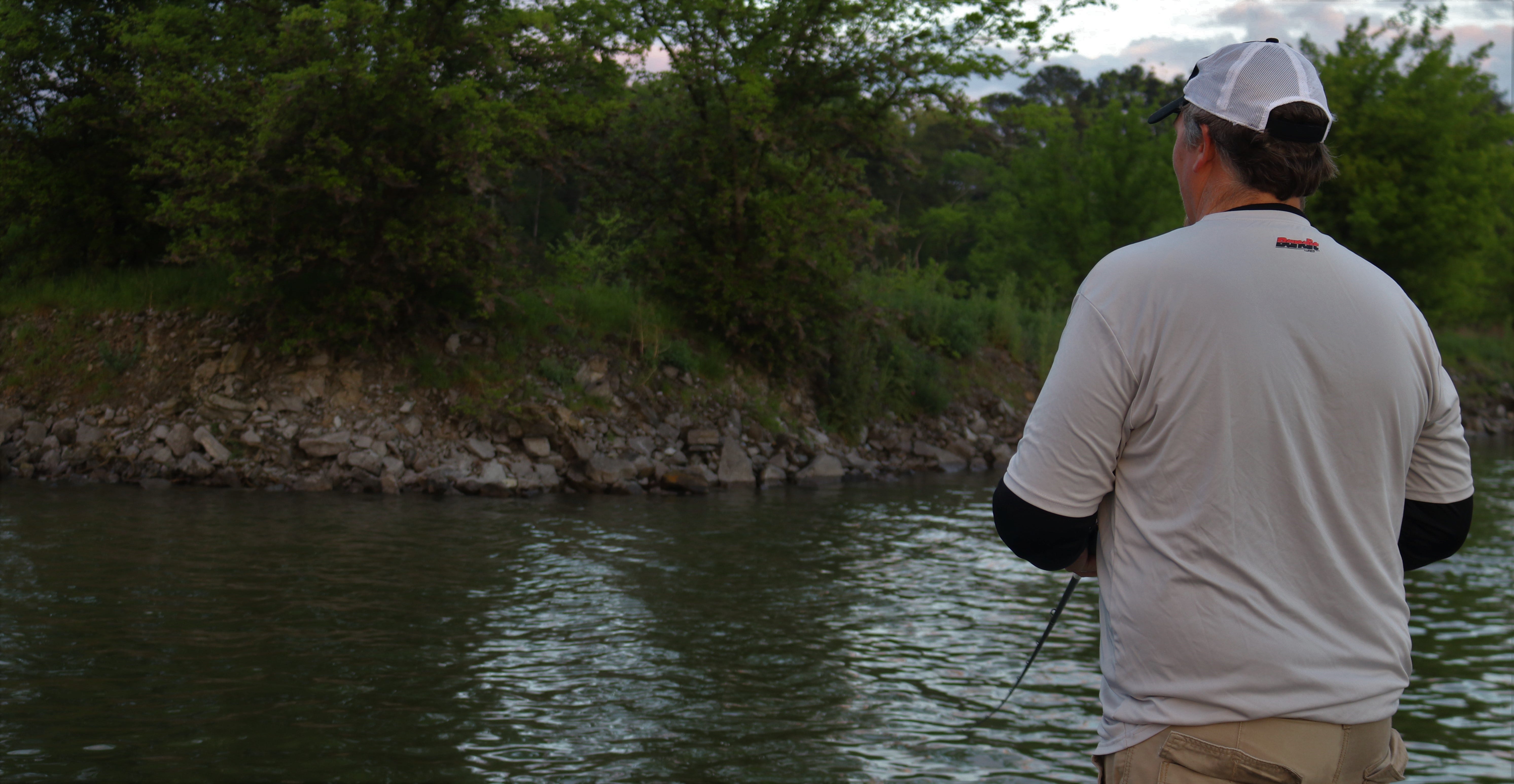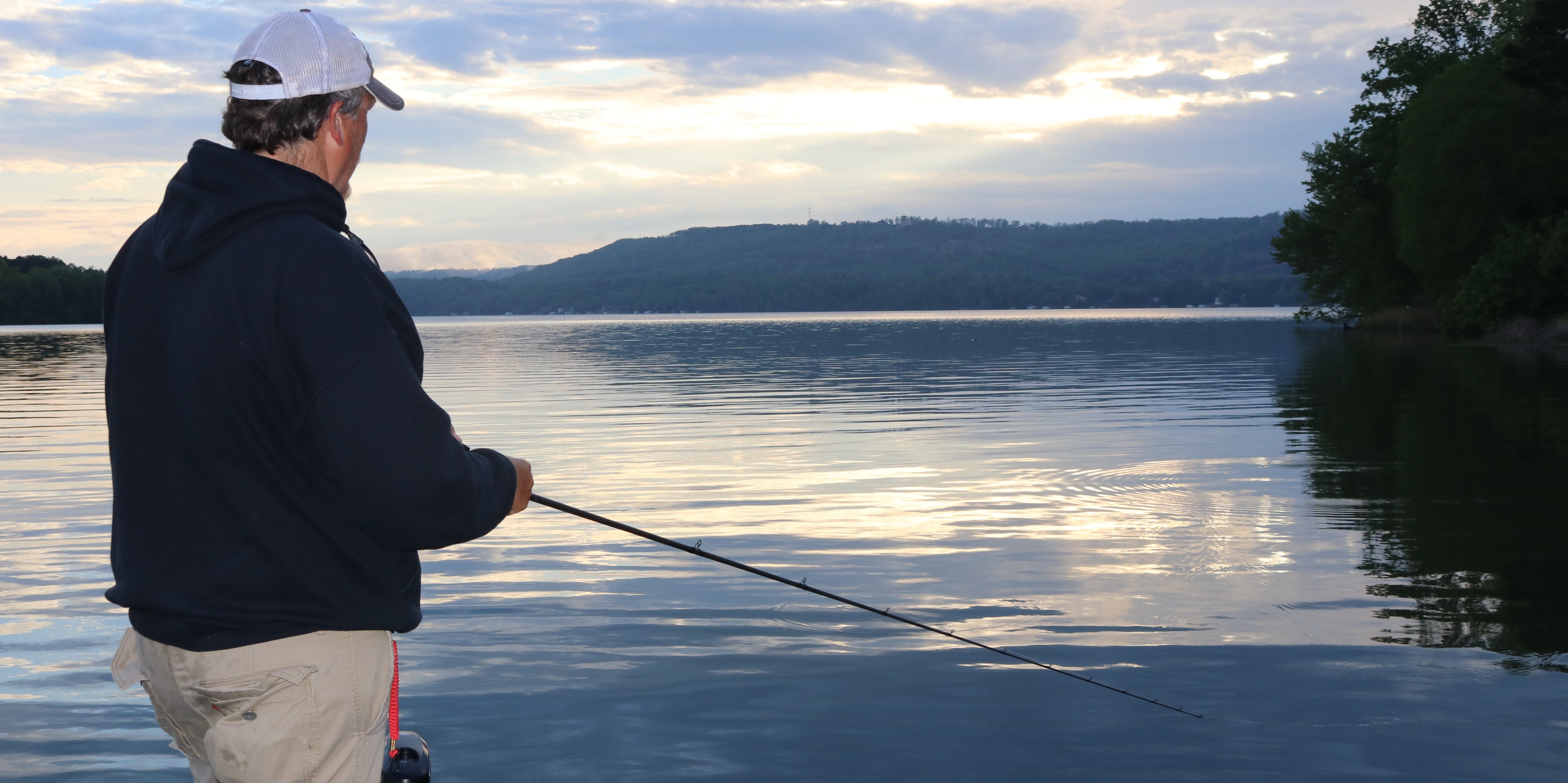- Apr 21, 2021
How to Catch Bass During the Shad Spawn
If you learn the times, places and strategies to capitalize on the shad spawn, spring bass action can be spectacular. Here’s what you need to know.
The bass spawn may be over but don’t head for deeper water yet. On lakes that team with shad, one of the best shallow fishing opportunities of the season happens when these baitfish spawn. Anglers who take advantage of this phenomenon to catch spring bass, such as Alabama bass guide Jimmy Mason, refer to it simply as “the shad spawn.”
“I start seriously looking for spawning shad in the spring when the water temperature stays above 70 degrees at night,” Mason said. “Here in northern Alabama that usually happens around the last week of April to the first week of May.”
Mason explained that shad spawn by swimming along together en mass. As the females drop eggs the males fertilize them. Shad always spawn near something their eggs can cling too, which is necessary for the eggs to mature. These objects include things like docks, sea walls, riprap and aquatic vegetation.
Spawning shad present a veritable feast for bass. Find spawning shad and you can be certain the bass will be there to gorge on them. Ripples on the surface can tip you off to spawning shad, as well as shad scooting over the surface as they flee from bass. Timing is critical because the shad cease spawning when the sun hits the water.
“The most important thing is to be on the water at daylight,” Mason said.
He typically begins casting in an area that will be the first to be lit up by direct morning sunlight. When the sun puts an end to the shad spawn at that location, Mason moves to shaded banks where the shad will continue to spawn until the sun gets higher. Cloudy days prolong the spawning activity for a bit, Mason added.
“Fishing the shad spawn is all about making as many casts as quick as you can,” Mason stressed.
He relies on a variety of baits that allow him to cover water quickly and efficiently. The specific bait he chooses depends on where the shad are spawning.
Marinas & Docks


Shad will scatter their eggs next to the floats that support floating docks and the posts that support non-floating docks. They do this in marinas and next to individual docks.
In these situations, Mason hammers the bass with two shad imitating baits. One is a Booyah Melee vibrating jig, which has an extra thin blade for increased vibration. He gives the Melee a perfect shad profile by dressing the hook with a 5-inch YUM Break'N Shad.
“I fish the Melee fast between the boats and the floats in marina slips,” Mason said. “It skips real well, so I can slip it under docks and cables.”
He also dupes dock bass with a War Eagle Screamin Eagle Spinnerbait. This diminutive double willow lure weighs ½ ounce but has the profile of a 1/4-ounce spinnerbait. It is designed to run true with a burning retrieve, which is how Mason fishes it.
With both baits, he opts for translucent skirts and colors in clear water. In stained water he fares better with solid shad colors.
“Some stalls and docks hold wolf packs of bass,” Mason said. “A lot of times you can catch several bass by making the same cast over and over.”
He added that docks and marina stalls with night lights attract spawning shad. Keep an eye out for such places, as they are high-priority targets for catching bass that are feeding on shad.
Riprap


A bridge causeway in the back third of a major creek can be a dynamite place to take advantage of the shad spawn, especially on lakes that have minimal aquatic vegetation, Mason advised.
The Screamin Eagle spinnerbait and Norman Speed N or Bandit 100 crankbait allow Mason to comb long stretches of riprap before the sun comes up and shuts down the shad spawn. Any bait should be in shad colors.
“Shad spawn up shallow on the riprap,” Mason said. “I keep my boat close to the rocks so I can run my baits tight and parallel to them.”
Sea Walls
Many reservoirs have sea walls that prevent bank erosion. Shad love to scatter their eggs next to these vertical structures. A sea wall along a bank that is lined with docks is a poor option even if the shad are spawning there. Too much time is wasted maneuvering your boat around one dock after another to fish a short stretch of the sea wall between them.
You’ll present lures to many more bass before the sun gets up by focusing on long sea walls that are not interspersed with docks.
“I concentrate on sea walls more when I fish a lake that has spotted bass,” Mason said. “That includes Smith and the Coosa River lakes. Spots are notorious for feeding on shad that spawn around sea walls.”
Mason relies on the Screamin Eagle spinnerbait and the War Eagle Buzzbait to put the hurt on spotted bass that ravage shad next to sea walls. The War Eagle Buzzbait features a flat keel head that pops the bait the surface, a squealing blade and a light wire for increased vibration.
“I like the quarter-ounce War Eagle buzzbait in the Blue Herring Shad or Chartreuse and White colors,” Mason said. “It’s all about imitating those shad. I try to keep the blade dinging on the sea wall.”
Bluff Walls & Broken Rock


Shad also spawn on bluff walls and broken rock. This is where Mason picks off smallmouth bass on lakes that support the brown ones. A spinnerbait and a Melee vibrating jig often put him and his clients in touch with trophy smallmouth.
Submerged Grass
When Mason guides on Tennessee River lakes in northern Alabama during the shad spawn, he searches for this activity along the edges of grass beds that have yet to grow to the surface. Hydrilla is especially productive. Grass edges adjacent to creek and river channels are the most likely to attract spawning shad and the bass that feed on them.
“The grass is anywhere from 2 to 5 feet below the surface when the shad spawn at Guntersville,” Mason said. “I keep my boat in the channel and fire my casts upstream 45 degrees over the grass.”
A Screaming Eagle spinnerbait, a Melee vibrating jig and 1/2-ounce Cordell Super Spot all produce bass for Mason when he retrieves these lures over the grass.
“You know you’re about to get bit when shad start following or bumping into your bait,” Mason said. “They think it’s a shad and they’re trying to mate with it. A trailer hook on the Melee or spinnerbait is super important.”
Water Willow
Water willow is a dense emergent grass that grows in shallow water near the bank on many reservoirs. This is another place where the shad will spawn, Mason pointed out.
“When shad spawn in water willow it can be really intense,” Mason said. “You’ll see bass blowing up on the shad.”
The Screaming Eagle spinnerbait and War Eagle buzzbait draw hard strikes for Mason. He also scores well with a Booyah Swim’n Jig, especially in patches of water willow that are too thick to fish effectively with a spinnerbait or buzzbait.
The flat bottom of the Swim’n jig keeps it up near the surface and its strong weed guard prevents it from snagging. Mason dresses the hook with a YUM Spine Craw. It has a compact body and two large, rapidly kicking claws.
“Reeling a swimming jig in the water willow is a great way to catch a big bag when the shad spawn,” Mason said.





